The Glycemic Index is the value assigned to a food item based on how quickly it releases glucose into the blood. The primary energy source in the blood is glucose. If a particular food item has a high glycemic index, it means that it releases energy into the blood at a quicker rate and vice versa1.
A faster energy release means a steeper spike in blood sugar levels, something that is not conducive to a person who has diabetes. Since they already have trouble with controlling the blood sugar in their bodies, sudden crests and troughs make their condition worse and put them at a higher risk of other organ failures. Therefore, it is advised that people with diabetes eat fruits with a low glycemic index, i.e., fruits suitable for diabetes.
Fruits are a healthy snack option for diabetics because the sugar, fructose, present in them is not readily absorbed by the human body. Therefore, the spike in blood sugar is gradual and good for the system. Also, fruits provide an excellent source of fibre and help you feel fuller for longer. This, in turn, leads to proper weight management and prevents obesity. Here are ten fruits for people with diabetes that have a low glycemic index.
Did You Know?
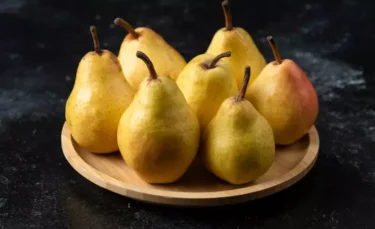
These have a glycemic index of 382. A versatile fruit, it can be poached, baked, or eaten as is. The healthiest option is to eat them with their peel on, as the amount of vitamins and minerals is highest just under the skin.

Oranges have a glycemic index of 40. Apart from providing a boost of vitamin C, oranges offer a good dose of fibre. Many people choose to have orange juice, which isn’t a healthy alternative, as the juice has all the calories but no fibre.
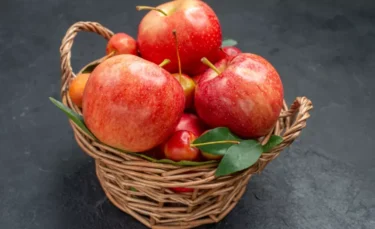
With a glycemic index of 394, apples provide you with fibre and a dash of crunch. They make a hearty salad, as well as baking and cooking options. Apart from this, they have an added advantage as they are gut-friendly and boost your iron levels.

The little fruits pack a punch. They have a glycemic index of just 20, but are abundant in nutrients. Rich in potassium, antioxidants, and fibre, cherries are good for your immune system and your heart5. They have a rather short growing season, so canned cherries can be substituted as long as they are low in sugar.

This citrus fruit has a glycemic index of 25. Vitamin C, antioxidants, potassium and fibre are some of the nutrients they are rich in. Grapefruits help maintain healthy heart function and are good for digestion. They also boost immunity6.
Also Read: Your Ultimate Guide To A Balanced Diet For Diabetes
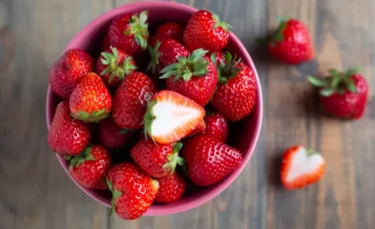
One of the favourites with young and old alike, Strawberries can be baked, cooked or had in their natural form. They make for exciting partners with drinks and food. Their glycemic index is 41.
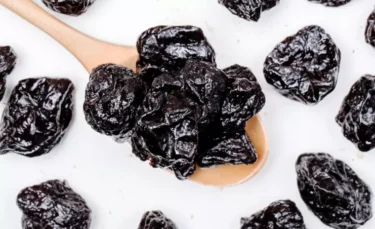
These have a GI of 29. People who suffer from constipation swear by them as they are potent natural laxatives7. The fibre in prunes adds bulk to the stool and also reduces cholesterol.
From experience, let me tell you about the magic of tomatoes! It’s like a magical product that may aid diabetics. 32 calories, 7 grams of carbohydrates, and 2 grams of fibre are included in one cup of sliced or diced tomatoes3, making it an ideal food for people with diabetes.
Dr. Siddharth Gupta, B.A.M.S M.D (Ayu)
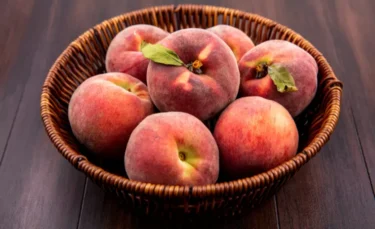
Succulent and juicy, what is there not to love about peaches? With a glycemic index of 45, they are a good option for people with diabetes. Rich in essential vitamins, minerals, and antioxidants8, peaches provide a delicious alternative to calorie-laden desserts.
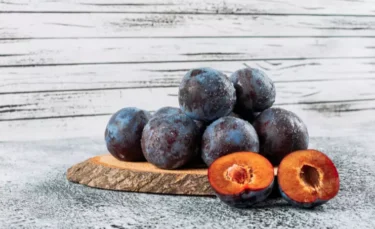
Plums have a glycemic index of 40. Because they bruise quickly, you might have difficulty laying your hands on them. They are rich in antioxidants and are juicy9.
Also Read: Mounjaro (Injection): Uses, Side Effects, Dosage, and How It Works

Grapes have a glycemic index of 53. They provide fibre, vitamin B-6 and other essential minerals in ample amounts10. They are good for digestion, boost one’s moods and support efficient brain function.
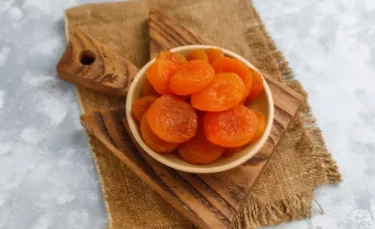
This dry fruit has a glycemic index of 32. It can be considered one of the low-glycemic index fruits. They provide vitamins A and E, as well as a bite-sized portion of copper. Like any other dried fruit, apricots contain a good amount of sugar11. Hence, make sure to consume them in smaller portions. One issue with having dried apricots is that they bruise quite easily. As a result, many ship them in to avoid this problem.
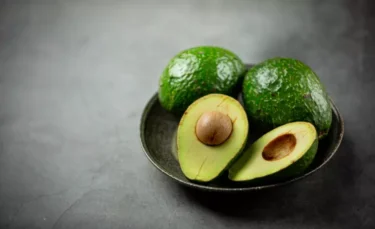
This is one fruit where its glycemic index depends on how ripe it is. In general, studies12 point to a number below 55, making it one of the lower GI fruits. Another research13 done on the Nigerian avocado reveals its index to be much more than 40! And wait till you hear this. A completely raw and peeled avocado is said to have a glycemic index of nearly zero.
Regardless of the indices, it is a fact that the fruit contains very little sugar. One of the main sugars found in it is called D-mannoheptulose, which is known to help monitor blood sugar management.
Some benefits of eating avocados include helping to lower the risk of metabolic syndrome, which can increase the chances of developing diabetes. It can also help in reducing the chances of many blood vessel diseases like kidney failure, heart disease, and even a stroke.

Guava is on the list of low-glycemic index fruits with a score of 12! You can add this fruit to a meal or simply have it as a snack. Due to its high fibre content, the fruit keeps you fuller for a longer time, which can help maintain good health. The fruit is also important in lowering blood sugar levels, especially in patients with type 2 diabetes14. A pro tip: eat the fruit without the peel, as it helps lower total serum cholesterol and triglycerides.

Having a GI score of 23, Tamarind is high in fibre. It is also packed with a variety of vitamins and minerals, including potassium, iron, B1, B2, C, K, and more. The fruit also has antioxidant and anti-inflammatory properties, which can help protect against diseases like cancer, diabetes, and heart-related conditions15.
The next time you feel hungry, opt for one of the prescribed fruits for diabetes.
I recommend all diabetics watch out for the quantity of mango they’re consuming. Consuming mango fruit is healthy! The necessary nutrients and fibre are present. However, some varieties may contain more naturally occurring sugar than others. From my observation, one mango, for instance, contains a staggering 46 grams of sugar, making it a poor choice if you’re trying to control your sugar intake or weight. You might have a few slices now and keep the remaining for afterwards.
Dr. Rajeev Singh, BAMS
Also Read: Is Mounjaro Approved for Weight Loss? Here’s What Our Endocrinologist Says
Disclaimer: The information provided here is for educational/awareness purposes only and is not intended to be a substitute for medical treatment by a healthcare professional and should not be relied upon to diagnose or treat any medical condition. The reader should consult a registered medical practitioner to determine the appropriateness of the information and before consuming any medication. PharmEasy does not provide any guarantee or warranty (express or implied) regarding the accuracy, adequacy, completeness, legality, reliability or usefulness of the information; and disclaims any liability arising thereof.
Diabetes is known as the ‘silent killer.’ In diabetes, blood sugar levels become elevated as the body gradually loses its sensitivity to insulin. As a long-term condition, it often requires lifelong use of prescribed medication. While effective, these treatments can sometimes be associated with side effects and may place a financial burden on individuals8.
Individuals can explore complementary approaches such as acupressure, acupuncture, and naturopathy to support their overall health. Within naturopathy, certain herbs are traditionally used to help maintain healthy blood sugar levels.
Below are a few herbs that may help lower blood sugar and support general well-being as part of a balanced lifestyle, though they should never replace medical treatment without professional guidance1.
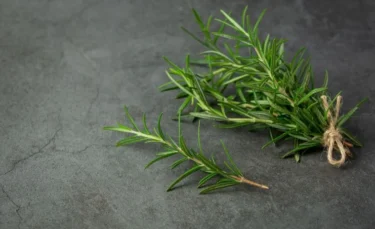
The distinctive aroma found in many soups and curries often comes from rosemary. Traditionally used in cooking and herbal practices, rosemary is believed to support metabolism and may help in maintaining healthy blood sugar levels. Some studies2 also suggest it may contribute to improved cholesterol balance by lowering LDL (bad) cholesterol and supporting HDL (good) cholesterol.
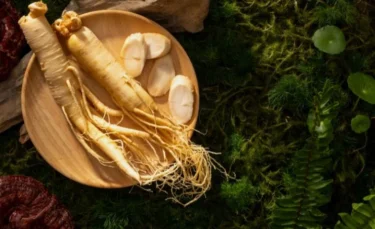
Ginseng has been used for centuries in traditional Eastern medicine. It is known for its immune-supporting properties and has been studied for its potential role in maintaining healthy blood sugar levels. Research suggests that ginseng may help slow the absorption of carbohydrates and support the body’s natural insulin production3.
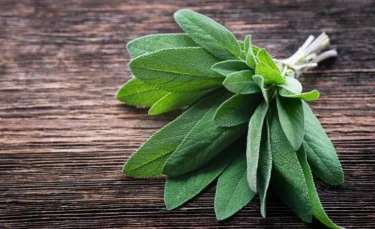
Research4 suggests that sage may help reduce blood sugar levels, particularly when consumed on an empty stomach. Adding sage to the diet may help increase the secretion of insulin and help manage diabetes better. Ginseng is best consumed in the form of tea.
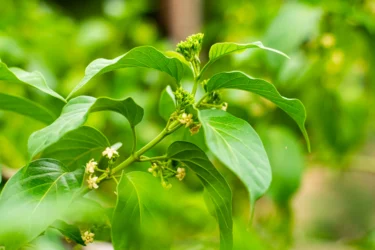
Gurmar has been used in Ayurvedic practices in India for centuries in the management of high blood sugar9. It contains compounds known as gymnemic acids, which may temporarily reduce the ability to taste sweetness, potentially helping to reduce sugar cravings. It is also thought to support the body’s natural processes in utilising excess glucose in the bloodstream.
Those who have diabetes can safely consume jamun as it is low in calories. Additionally, the polyphenolic ingredients present in jamun play a significant role in the treatment of diabetes7.
Dr. M.G. Kartheeka, MBBS, MD (Pediatrics)
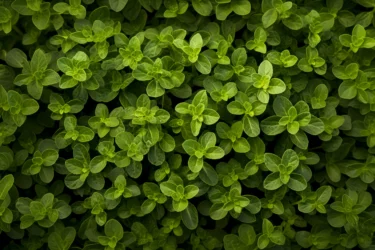
Oregano may offer supportive benefits for those managing high blood sugar. It is believed to encourage pancreatic activity, potentially aiding natural insulin production, and may help reduce cravings for sweet foods. Certain compounds in oregano are thought to support glucose metabolism and reduce carbohydrate formation in the body, while also contributing to overall immune health5.

Aloe vera, a fleshy plant widely used in traditional medicine across India, Mexico, Australia, and South America, is known for its soothing and anti-inflammatory properties. It has been used to support digestive health and reduce inflammation, an underlying factor in many chronic conditions, including diabetes3. Read more about the benefits of aloe vera for skin and hair.
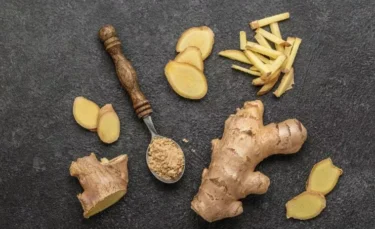
Ginger is used extensively in Chinese and Indian cuisines. This aromatic herb has been used to helps with diabetes as it may increase the sensitivity of the body to insulin and helps in the increase of insulin secretion10.
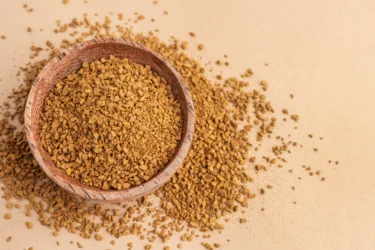
Fenugreek seeds and the herb itself have traditionally been used to support skin and digestive health. It is also thought to aid in managing metabolic conditions, including high blood sugar levels. Some studies suggest that fenugreek may contribute to improved blood glucose c
However, while herbs may help control some symptoms of diabetes, it is important to remember that they cannot cure a person. It is recommended to consult with a doctor before using any herbal remedies, particularly to ensure they are suitable based on your medical history and current treatment. Always use high-quality sources, as poor-quality herbs can be harmful. When used responsibly and under medical supervision, herbs may serve as a supportive complement to prescribed treatment,3.
While home remedies may offer supplementary support, prescribed (allopathic) medicines remain essential in the management of diabetes and in preventing its complications6. It is important to attend regular follow-up appointments, at least annually, with your physician to monitor blood glucose levels and review any ongoing treatment.
Dr. Ashish Bajaj, M.B.B.S., M.D.
Also Read: Mounjaro (Injection): Uses, Side Effects, Dosage, and How It Works
Managing diabetes effectively requires a balanced approach that combines conventional medicine with informed lifestyle and dietary choices. Herbs like rosemary, ginseng, and fenugreek may naturally support blood sugar control. However, they should complement and not replace prescribed diabetes medications. Always consult a doctor before starting any herbal remedies.
1. Aziz N, Wal P, Wal A, S. Saxena M. Evaluation of a Polyherbal Powder for Treatment of Diabetes Mellitus. Indian Journal of Pharmaceutical Sciences [Internet]. 2019 [cited 2025 May 26];81(6). Available from: https://www.researchgate.net/publication/338728855_Evaluation_of_a_Polyherbal_Powder_for_Treatment_of_Diabetes_Mellitus
2. Shawabkeh M, Jamal A. Effect of rosemary on fasting blood glucose, hemoglobin A1c and Vitamin B12 in healthy person and Type 2 diabetic patients taking glucomid or/and metformin. National Journal of Physiology, Pharmacy and Pharmacology [Internet]. 2017 [cited 2025 May 26];1. Available from: https://www.researchgate.net/publication/320698331_Effect_of_rosemary_on_fasting_blood_glucose_hemoglobin_A1c_and_Vitamin_B12_in_healthy_person_and_Type_2_diabetic_patients_taking_glucomid_orand_metformin
3. Choudhury H, Pandey M, Hua CK, Mun CS, Jing JK, Kong L, et al. An update on natural compounds in the remedy of diabetes mellitus: A systematic review. Journal of Traditional and Complementary Medicine [Internet]. 2018 Jul [cited 2025 May 26];8(3):361–76. Available from: https://www.ncbi.nlm.nih.gov/pmc/articles/PMC6035310/
4. Lima CF, Azevedo MF, Araujo R, Fernandes-Ferreira M, Pereira-Wilson C. Metformin-like effect of Salvia officinalis (common sage): is it useful in diabetes prevention? Br J Nutr. 2006 Aug;96(2):326-33. doi:10.1079/bjn20061832. PMID: 16923227. Available from: https://pubmed.ncbi.nlm.nih.gov/16923227/
5. Gutiérrez-Grijalva EP, Leyva-López N, Vazquez-Olivo G, Heredia JB. Oregano as a potential source of antidiabetic agents. J Food Biochem. 2022 Dec;46(12):e14388. doi:10.1111/jfbc.14388. Epub 2022 Sep 13. PMID: 36098212. Available from: https://pubmed.ncbi.nlm.nih.gov/36098212/
6. Kooti W, Farokhipour M, Asadzadeh Z, Ashtary-Larky D, Asadi-Samani M. An update on natural compounds in the remedy of diabetes mellitus: A systematic review. J Tradit Complement Med. 2018 Jul;8(3):361–76. doi:10.1016/j.jtcme.2017.08.012. PMID: 29992107. Available from: https://www.sciencedirect.com/science/article/pii/S2225411017301049
7. Saeed H, Shabbir MA, Rafi A, Din A, Khan MR, Gill P, Afzaal M, Ahmed F, Ahmad MF, Akram N, Hailu GG. Assessment of diabetes mellitus retrieving potential of low caloric Jamun (Syzygium cumini) drink through animal modeling. Food Sci Nutr. 2025 May 5;13(5):e70251. doi:10.1002/fsn3.70251. PMID: 40330204; PMCID: PMC12053304. Available from: https://www.ncbi.nlm.nih.gov/pmc/articles/PMC12053304/
8. Sapra A, Bhandari P. Diabetes. [Updated 2023 Jun 21]. In: StatPearls [Internet]. Treasure Island (FL): StatPearls Publishing; 2025 Jan-. Available from: https://www.ncbi.nlm.nih.gov/books/NBK551501/
9. ScienceDirect Topics. Gymnema sylvestre – an overview. [Internet]. Amsterdam: Elsevier; [cited 2025 Jun 3]. Available from: https://www.sciencedirect.com/topics/medicine-and-dentistry/gymnema-sylvestre
10. Li Y, Tran VH, Duke CC, Roufogalis BD. Preventive and protective properties of Zingiber officinale (ginger) in diabetes mellitus, diabetic complications, and associated lipid and other metabolic disorders: a brief review. Evid Based Complement Alternat Med. 2012;2012:516870. doi:10.1155/2012/516870. Epub 2012 Nov 22. PMID: 23243452; PMCID: PMC3519348. Available from: https://pmc.ncbi.nlm.nih.gov/articles/PMC3519348/
Disclaimer: The information provided here is for educational/awareness purposes only and is not intended to be a substitute for medical treatment by a healthcare professional and should not be relied upon to diagnose or treat any medical condition. The reader should consult a registered medical practitioner to determine the appropriateness of the information and before consuming any medication. PharmEasy does not provide any guarantee or warranty (express or implied) regarding the accuracy, adequacy, completeness, legality, reliability or usefulness of the information; and disclaims any liability arising thereof.
When your blood sugar levels are higher than normal, carbohydrates such as cereals, pasta, certain fruits, desserts and bread are usually responsible. When one is diabetic, a meal plan is very important because it guides you on what kind of foods to eat. It should be good enough to fit in with your eating habits and also your schedule. A good meal plan should include consideration and optimization of the following:
Foods with low glycemic index values are better choices for stabilizing blood sugar than foods with high glycemic index values. The glycemic index basically depends on the physiological ability of dietary carbohydrates to lower or increase the level of blood sugar in reference to the type of food consumed by the diabetic patient. Relatively high glycemic index foods have ratings above 50, and often between 75-100. Check out the Glycemic Index Food Chart to find out the glycemic index values of foods that you can include in your Diabetes Diet Plan.
The purpose of a good meal plan is to help keep your weight on track, improve your cholesterol level, blood sugars and also blood pressure. According to past research[1] & health educators from the American Diabetes Association (ADA), a healthy diet along with a healthy lifestyle of exercising to maintain a healthy weight can help to reduce diabetes type 2. You can check healthy, mouth-watering recipes for diabetes that can help you lower your blood sugar levels, without compromising on taste and variety!
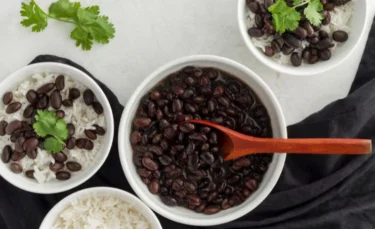
These are rich in fibres & help you feel full for longer periods. Beans, including black beans, do contain carbohydrates, but they also contain a significant amount of dietary fibre, protein, and other nutrients that result in a relatively low glycemic index rating[2]. Consequently, they secure a prominent position in the Diabetes Food Chart.
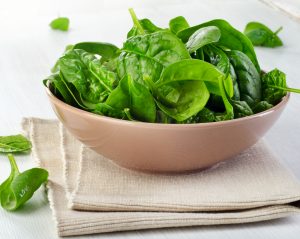
This is an all-season vegetable that is a very good source of dietary fibres, vitamins, folate, chlorophyll, manganese, calcium, potassium, zinc, phosphorus, protein and carotene. Spinach’s glycemic index is very low and which is why it is very helpful for diabetic patients for stabilizing blood glucose levels[3].
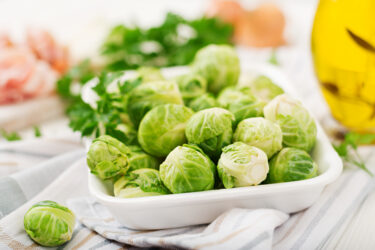
These are a part of the cruciferous vegetable family and include kale, rutabaga, brussel, broccoli, sprouts, cabbage, turnips, etc. They provide a lot of nutrients at low calories & are known to lower the blood glucose level in patients with type 1 diabetes and stabilize the lipids, insulin and blood glucose level type 2 diabetics.
I suggest kale if you’re looking to keep your blood sugar under control. It contains a mere 0.8 g of sugar. Packed with essential nutrients and fibre, kale may offer a powerhouse of benefits for your overall health.
Dr. Rajeev Singh, BAMS
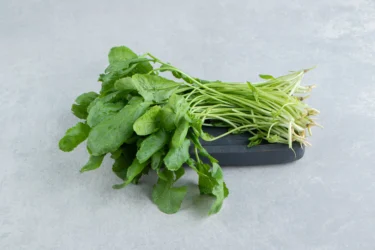
Leaf-mustard is very low in calories (27 calories per 100g raw leaves) and fats[4]. However, its dark-green leaves carry ample amounts of phytonutrients, vitamins, and minerals. Additionally, it contains a very good amount of dietary fibre that helps control cholesterol levels by interfering with its absorption in the gut.
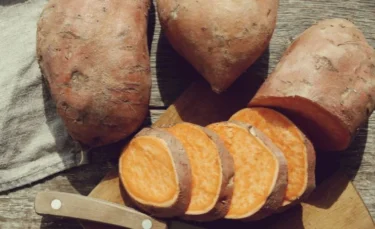
Best amongst the potato family, boiled sweet potatoes have a glycemic index of 44 which is why they are considered a superfood for diabetics. According to the American Journal[5] of Clinical Nutrition, eating sweet potatoes in moderate amounts as compared to other potatoes, is likely to give lesser troubles with sugar control.
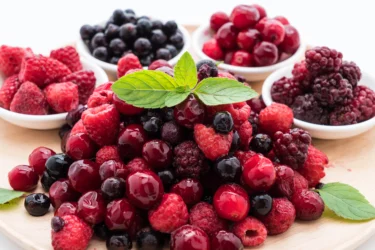
Berries contain a natural sugar called fructose which does not need to be metabolized; hence, the fruit is well tolerated in the body. It’s advisable to take two servings but always monitor what works best for you.
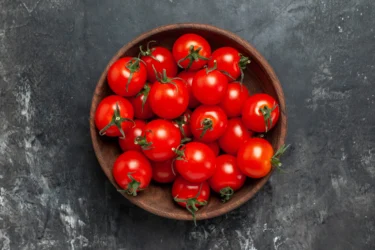
Fresh tomatoes, when consumed in moderation, are not a problem for managing your blood sugar levels. For example, 1 cup of cherry tomatoes contains 5.8 g of carbohydrates and 1.8 g of fibre, which is the equivalent of 4 g of net carbs, while 1 medium whole tomato has 4.8 g of carbohydrates and 1.5 g of fibre, or the equivalent of 3.3 g of net carbs. Its estimated glycemic index is 2 to 4.
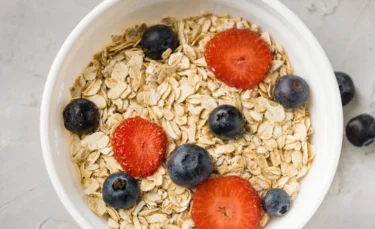
Studies[6] have confirmed that eating whole grains and high-fibre foods helps in reducing the risk of diabetes by almost 35 to 42%. Oatmeal consists of high fibre and whole grains. In addition, it consists of soluble fibre that slows down the rate of glucose absorption in the GIT(gastrointestinal tract) thus ensuring the blood-sugar levels are kept at the right levels.
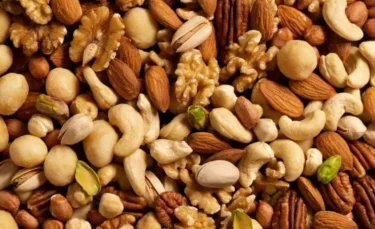
According to research[7] from St. Michael’s Hospital and the University of Toronto, eating nuts every day could help control diabetes type 2. It is important to note that nuts have a much lower glycemic index which ranges from 14 to 21. They contain relatively minimal amounts of carbohydrates in comparison to the favourite snacks consumed by most people such as crackers.
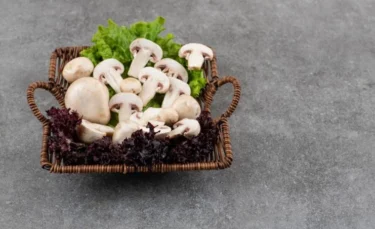
Depending on the kind of mushroom you go for, the glycemic index might fluctuate although it is always considered as low. With their unique line of nutritional benefits, it also has the benefit of adding a whole new flavour to a meal. Portabella mushrooms are used as a meat replacement because of their beefy texture and nutritional value. It contains 22 calories per 100g.
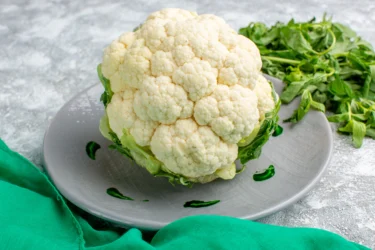
Cruciferous vegetables such as cauliflower are very beneficial in terms of glycemic load. These vegetables are often seen in the health news since they are known for their heart disease and anti-cancer characteristics. If taken regularly, this unique blend of phytonutrients is very healthy and absorbed well in the body. One can rotate this kind of vegetables so as to avoid eating the same kind every day[8].

This fruit ranks pretty low when it comes to the glycemic index. Though not as low as some vegetables, it’s considered healthy for diabetic people. It’s definitely a fruit to consider when making a listing of a low glycemic index food diet.
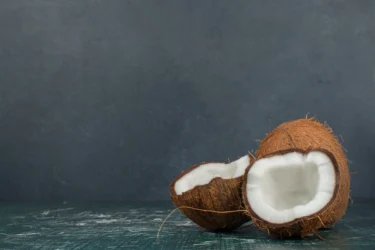
Coconut ranks highly in saturated fats, but if used sparingly, it is not a big threat to your blood glucose levels. Coconuts are used to flavour different types of dishes. Its different parts can be used, be it, coconut milk, coconut flour, its flesh and also coconut water. However, it’s important to know which part you are using to determine the glycemic index as well as nutritional benefits.
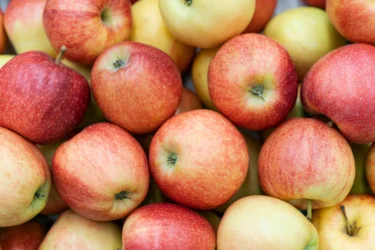
They say, an apple a day keeps the doctor away. This is because apples provide you with fibre, vitamins and minerals and a wide range of nutritional benefits while having a low glycemic index of 39. It requires very little preparation and no special storage, and it is also easy to carry[9].
Let me share a delicious and healthy fruit recommendation with you: passion fruit! If you’re looking to control your blood sugar levels, passion fruit might be a great addition to your diet. Just 100 g of this tropical fruit contains approximately 11.2 g of sugar. Given that the type of sugar is 100% natural, it is advisable as a natural source to keep your blood sugar levels normal. Do consume in a small to moderate amount.
Dr. Siddharth Gupta, B.A.M.S, M.D (Ayu)

Peaches are a great food to stock in the season. You can enjoy the natural sweetness in them, and when eaten in moderation, they can keep the levels of blood sugars in check. Though the GI changes when peaches are used as a part of a dessert, eating fresh peaches shouldn’t raise concerns. Its GI ranking is 28.
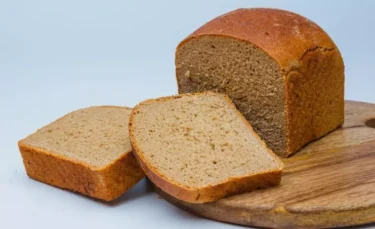
Whole wheat bread has gained popularity in recent years. This is because white bread is regarded as unhealthy. However, wheat bread is ranked 49 in terms of GI. This is because it’s processed differently from white bread and hence, has more nutritional benefits[10].
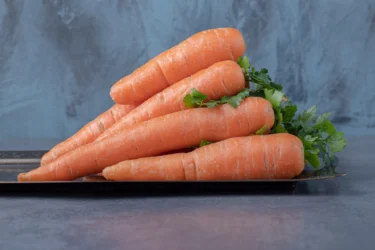
Beta carotene in carrots is known to help with eyesight and is also high in vitamin A. When mixed with peas, they can make a very delicious meal and still keep low glycemic content. Carrots have a glycemic index of 19[11].

Broccoli is a superfood often seen in almost every healthy food listing. They are known for providing fibre, minerals, vitamins and nutritional value. They have a very low value of 10 on GI scales and therefore, the body can handle it very well[12].
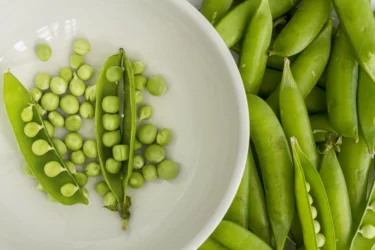
These contain 81 calories in every 100g serving. They also have high amounts of fibre and a fair amount of potassium. Also, it is a source of vitamin c and protein. Its glycemic index is 39.
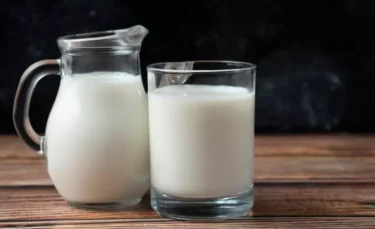
Milk is known for providing calcium and vitamin D as well as high protein. Having a glass of milk when you are diabetic is totally acceptable since it falls under the low GI foods with a glycemic index of 31[13].
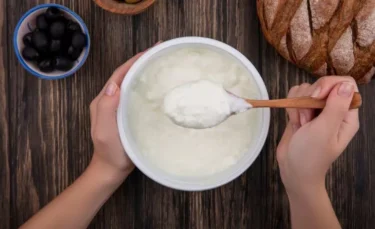
Yoghurt is known because of its active and live cultures which help in the digestive issues by providing good bacteria. Whether you are eating unsweetened yoghurt or one with artificial sugars, it will still fall under low GI foods. However, low-fat yoghurt is recommended. Its glycemic index is 33. Also, it is advisable to consume natural flavoured yoghurt that is free of any type of artificial sweeteners[14].
Another excellent option for managing blood sugar levels is tofu. If you’re looking for a protein-rich and low-sugar food, tofu might be a great choice. Only 0.62 g of sugar is included in 100 g of tofu.
Dr. Anuja Bodhare, B.A.M.S, M.D (Ayu)
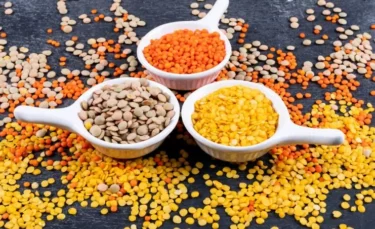
Lentils are very rich in fibre, minerals and vitamins. They are slowly gaining popularity and are often overlooked when it comes to a blood sugar conscious diet. Their Glycemic index rank is 30[15].

Grapes are very sweet and many mistakenly believe they should be avoided when it comes to diabetics dieting. There are various types of grapes one can enjoy eating, be it red or white. Whichever kind you love the glycemic index is considered low & lies between 43 to 53 depending on the kind.

These are often compared to apples but they contain different nutrients as well as taste. They are a great choice when one is considering a low glycemic index food. Their glycemic index rank is 41.
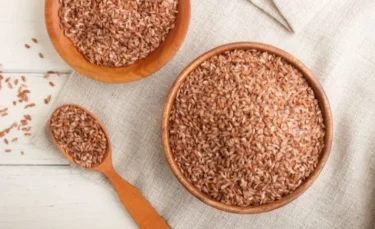
Brown rice is one of the common foods that most diabetic people consume. This is because, compared to white rice, a serving is considered to have a glycemic rank of 87 whereas that of brown rice is 55.
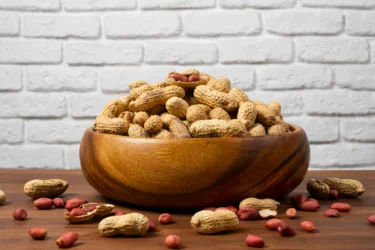
Peanuts can either be enjoyed as a snack, with butter or even sauce. They are considered legumes and are very good at keeping someone alert. They are also very good at stabilizing blood sugars. Their glycemic index rank is 6[16].
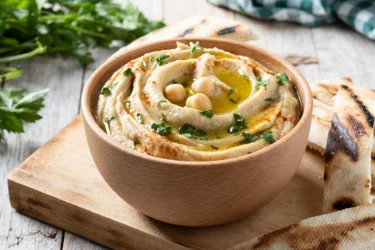
Hummus is made up of chickpeas but ranks lower than them. This is due to other ingredients in them such as lemons, tahini, and olive oil. Their GI is virtually zero but you still need to watch portions so as to avoid gastrointestinal discomfort. The glycemic index is 6[17].
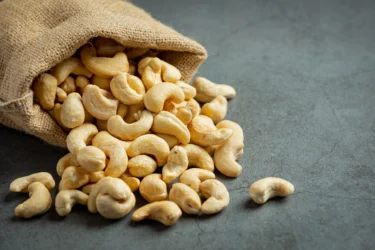
These are healthy nuts and can be taken as desired. They act to help the health of polyunsaturated and monounsaturated fats. It’s also a great source of magnesium and iron. Cashew nut butter is also healthy if one opts for an organic variety. They have a very low GI of 2[18].
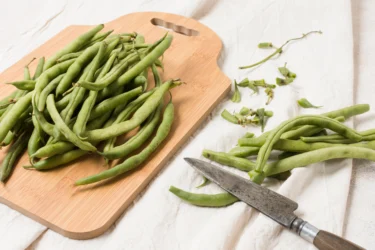
Green beans are one of the most popular foods often consumed as a side dish. They are relatively low when subjected to the GI scale and are also an excellent source of fibre, vitamin c, and minerals. They help strengthen the immune system and also provide antioxidants that help battle free radicals so as to help avoid inflammation. Their Glycemic index rank is 15.

Oranges are known for their vitamin C content and it’s a great fruit to eat to boost your immune system when you notice early symptoms of a cold. They can be used as a smoothie, morning fruit or an all-time top-up. Its glycemic rank is 40.

These are considered to be low glycemic foods. Though they may vary in scale, they have a considerable amount of nutrition. The glycemic index for plums is 24 and 29 for prunes.
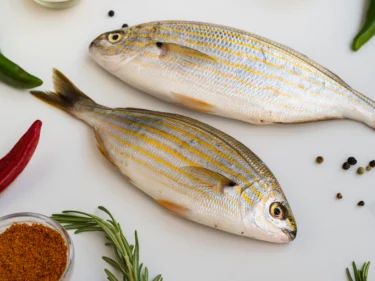
Fish are good for diabetic patients since it’s an excellent source of low proteins. They are known to be rich in omega 3, a kind of fat that strengthens the heart and potentially helps with management of diabetes. Including seafood in your diet and having at least two or more servings a week will help a great deal in blood sugar levels reduction[19].
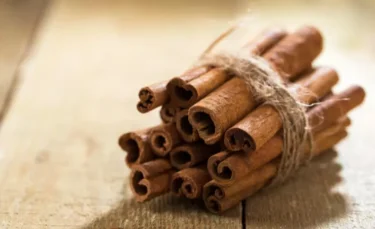
Although many sprinkle this in our drinks every morning, you might be surprised to realize the health benefits of this wonderful spice. Other than lowering the bad cholesterol, and raising the good cholesterol, cinnamon has been proven to lower blood sugars modestly.
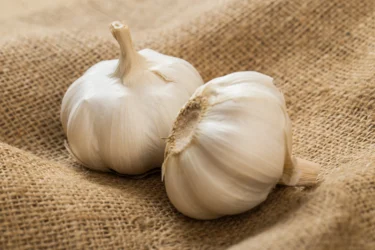
Many people tend to fear garlic due to bad breath. But garlic extract is known to increase the levels of insulin available for diabetics. It has thereby been proven to reduce the levels of blood sugars[20].
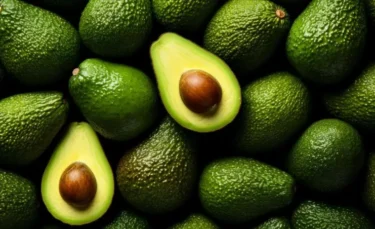
These are foods such as avocados, nuts, and salmon, tuna, trout and olive oil. They all contain monounsaturated fats that help lower insulin resistance.
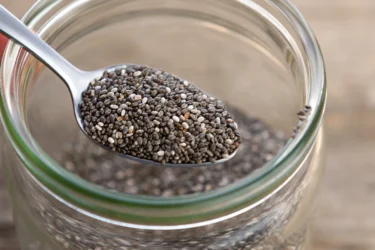
Chia seeds are minute dark, seeds with nutty flavours. They are rich in healthy fats, vitamins, fibre, and antioxidants. One of the studies[21] published in ‘Diabetes Care’ found out that Chia seeds play a role in improving blood sugar. Also, it reduces the chances of heart diseases occurring in type-2-diabetic patients.
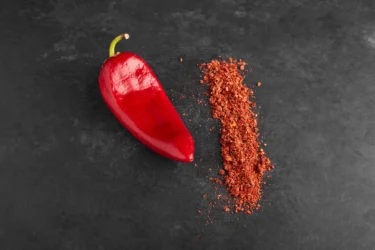
Capsicum is known to be cultivated for thousands of years and used for food, medicine and also for decorative purposes. The effectiveness of chilli peppers as medicine is that they can activate the transient receptor vanillin. This receptor is associated with neuropathic and inflammatory pain, anxiety and how our bodies process fats. It’s also an important insulin regulator. This study has led to the production of extracts aiming at pharmacological strategies to treat medical conditions such as diabetes[22].
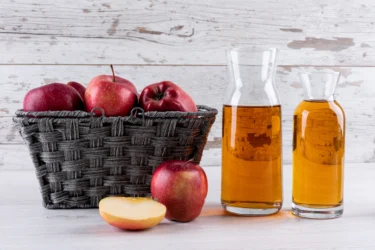
Vinegar has been used for centuries for a variety of health problems, including glucose management, dandruff, excessive sweating, fungal infections, and even heartburn. In a study[23] published in Diabetes Care, two tablespoons of ACV at bedtime helped to regulate fasting blood glucose levels in patients with type II diabetes.
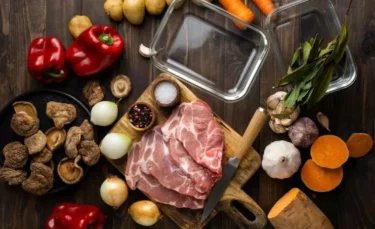
Protein foods are an important part of a diet plan. They include; fish, chicken, meats, soy products, and cheese. The difference between these foods is how much fat they contain and protein.
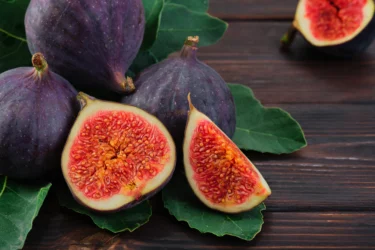
Although dried figs are available throughout the year, there is nothing more refreshing than the unique texture and taste of fresh figs. The leaves of fig have been known to contain anti-diabetic properties and can reduce the level of insulin needed by persons with diabetes.
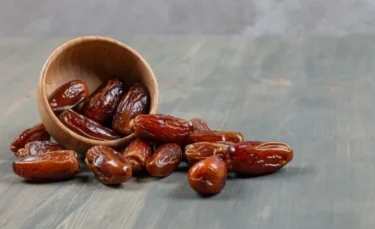
Dates, along with other healthy but relatively unsafe foods for diabetes like peanuts and honey, often get a bad rap. These foods are, however, good for reducing bad cholesterol or LDL. For diabetics, in particular, portion control of these foods becomes very important.
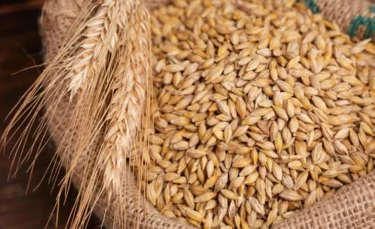
A cup of cooked whole-grain barley consists of 14 grams of fibre. The fibre is 3g soluble and 11g insoluble. 1 cup of cooked pearl barley consists of 6g fibre which is 2g soluble and 4g insoluble. Diabetic patients experience alterations in blood glucose levels after consuming carbohydrate-rich foods. Barley consists of a GI of 25.

Unlike white bread or potatoes, pasta is pretty low in terms of its glycemic impact. Many diabetics fear pasta because of its infamously high carbohydrate nutrients. However, with proper proportions, pasta can be safely indulged in a diabetic diet. Limiting portion size and choosing high-fibre whole grain pasta is the key to keeping the blood sugars low.
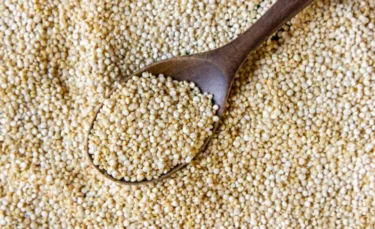
Quinoa is an excellent item to control your blood sugar. Whole grain with a low glycemic index to support even blood sugar, is packed with protein, fibre, vitamins, minerals, and phytochemicals. Quinoa is easy to cook and flavorful, and you can incorporate it into a healthy diabetic diet in a variety of ways[24].
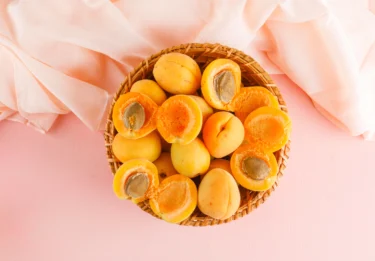
Apricots are sweet and have a delicate flavour. They have a wide range of nutrients and this makes them worthwhile to be added to a diabetic diet. Apricots can help you satisfy your sweet tooth without worrying about your blood sugars due to their low glycemic index. Dried apricots are also a great alternative when eaten in small amounts.
Let me share with you another fantastic option for maintaining healthy blood sugar levels: arugula! If you’re looking for a nutritious leafy green that won’t spike your blood sugar, arugula is a great choice. In just 100 g of raw arugula, you’ll find only 2 g of sugar.
Dr. Smita Barode, B.A.M.S, M.S.
Apart from the above list of foods to eat to lower blood sugar, there are other dietary and lifestyle changes you can use. Here are a few tips on diabetes control to get you started:
Weight management will be a major factor in your fight against diabetes, so be sure to follow your doctor’s instructions carefully.
Apart from lowering the blood sugar within a short duration the foods also offer the body other benefits that include boosting body immunity, repairing worn-out cells and checking on most of the lifestyle diseases. However, this is not an exhaustive list of food items that can be eaten to control blood sugars. This list is meant to guide you on some of the locally available foods that have a low GI and which can be considered when regulating the blood sugar in the body. For those who are suffering from very high blood sugar levels, it is advisable that they seek the advice of a dietitian, clinical nutritionist and their family doctors so as to come up with the best treatment plan besides healthy eating.
Disclaimer: The information provided here is for educational/awareness purposes only and is not intended to be a substitute for medical treatment by a healthcare professional and should not be relied upon to diagnose or treat any medical condition. The reader should consult a registered medical practitioner to determine the appropriateness of the information and before consuming any medication. PharmEasy does not provide any guarantee or warranty (express or implied) regarding the accuracy, adequacy, completeness, legality, reliability or usefulness of the information; and disclaims any liability arising thereof.
The very mention of diabetes can strike fear in the heart of the bravest. It is known to adversely affect several organs in the body, like the eyes, kidneys, nerves, heart and many more. If not diagnosed and treated on time, it can lead to several complications.
You may have read plenty of blogs on how you can manage diabetes or about the measures you can adopt to prevent the onset of this disorder. But are you aware that there is a test that can predict your chances of developing diabetes? It’s called the HOMA-IR (Homeostatic Model Assessment of Insulin Resistance) test. This test may help you prevent diabetes.
Besides HOMA-IR, several other diagnostic tests are used to diagnose diabetes. Contact your doctor to determine which test is best for you and how to prepare for it. Remember, the earlier the diagnosis, the easier and more effective the treatment will be.
To understand how HOMA IR may help you, you have to understand a thing or two about diabetes.
Diabetes is classically understood as two major types– Type 1 (your body produces less insulin) and Type 2 (associated with insulin resistance and less insulin production)2.
Glucose, also known as blood sugar, provides energy to the cells in our body. It acts as fuel, driving our cells, tissues, muscles and organs to perform their respective tasks. Our pancreas produces a hormone called insulin. Insulin sends signals to your cells to pick up glucose from your bloodstream. But sometimes, your cells are unable to process the signals that insulin sends and fail to absorb sugar from the blood. This is a case of insulin resistance. And when this happens, the sugar level in your blood begins to soar. So, we can say that insulin resistance is the precursor to diabetes.
Abdominal fat increases insulin resistance. Cardio exercises combined with strength training not only decrease insulin resistance(via weight loss) but also increase insulin receptor density in muscles.
Dr. Nikhil Yadav, MBBS MD,CCEBDM
Insulin resistance not only paves the way for type 2 diabetes but also other diseases like hypertension, dyslipidemia, cardiovascular disease and cancer.
Strangely enough, people with normal blood sugar levels may be insulin resistant. And this is exactly where HOMA IR can help. This test measures how resistant your cells are to insulin. Higher Insulin resistance, even if the sugar content in your blood is within acceptable levels, suggests that your blood sugar may spike in the future. This is how the HOMA-IR goes a step further than a normal blood sugar test, which can only monitor your sugar level and cannot detect any issues until high blood sugar develops1.
HOMA IR, on the other hand, might ring the warning bells as the resistance to insulin increases in the pre-diabetes stage, so that you can take the necessary steps to prevent a full-blown attack of diabetes.
Acute illness and stress are the two clinically often neglected conditions where the fasting plasma glucose test is more sensitive than HbA1C, which is also known as glycated haemoglobin test, for detecting blood sugar levels. One should always do the Fasting plasma glucose along with HbA1C to get a correct diagnosis.
Dr. Ashish Bajaj, M.B.B.S., M.D. in Clinical Pharmacology and Toxicology
Also Read: Mounjaro (Injection): Uses, Side Effects, Dosage, and How It Works
Your results from the HOMA-IR test are displayed against a scale or range that determines the level of your insulin resistance. Low HOMA-IR implies you are sensitive to insulin, and higher levels indicate insulin resistance and a higher chance of you developing diabetes mellitus.
To properly address the rising insulin resistance in your body, it’s necessary to make changes to your lifestyle and habits. There are two ways in which this could be achieved:
Initial diagnosis of diabetes should always be made by fasting blood sugar and postprandial blood sugar. For monitoring, you can use HbA1c.
Dr. M.G. Kartheeka, MBBS, MD(Pediatrics)
You should consult a doctor who can advise you on appropriate lifestyle modifications or prescribe the right medication. You will also need to follow a special diet of fresh vegetables, fruits, whole grains, fish, eggs, and soy products. Seek a dietician’s help to draw up a diet chart and don’t forget to exercise regularly. Workout is known to decrease insulin resistance. Get at least 7 hours of sleep.
HOMA-IR is a groundbreaking new method of diagnosing diabetes before it develops. With appropriate care, you can avert diabetes.
Also Read: Your Ultimate Guide To A Balanced Diet For Diabetes
It is crucial to understand that diabetes doesn’t develop overnight; it builds silently over time. The HOMA-IR test offers a way to evaluate your risk before the diabetes symptoms even appear. By identifying insulin resistance early, you can take preventive measures such as making lifestyle changes, seeking medical guidance, and developing better habits3. If you or a loved one is at risk, talk to a healthcare professional about whether this test is suitable for you. Take control of your health today, because beating diabetes beforehand is always better than managing it later.
Also Read: 45 Food Items That May Help To Control Blood Sugar!
Disclaimer: The information provided here is for educational/awareness purposes only and is not intended to be a substitute for medical treatment by a healthcare professional and should not be relied upon to diagnose or treat any medical condition. The reader should consult a registered medical practitioner to determine the appropriateness of the information and before consuming any medication. PharmEasy does not provide any guarantee or warranty (express or implied) regarding the accuracy, adequacy, completeness, legality, reliability or usefulness of the information; and disclaims any liability arising thereof.
Though they sound similar, ketosis and ketoacidosis are very different.
Ketosis is a natural process where the body burns fat for energy, often during fasting or a low-carbohydrate diet. It may support weight management when done under proper guidance.
Ketoacidosis, however, is a serious medical condition, most commonly affecting people with diabetes. It occurs when the body produces too many ketones, making the blood dangerously acidic1.
Diabetic ketoacidosis is a complication that occurs when insulin levels fall too low, causing blood sugar to rise sharply. Without sufficient insulin, glucose cannot enter the body’s cells, leaving them starved of energy. To compensate, the body starts breaking down fat, which leads to the production of acidic substances called ketones.
As ketones build up in the blood, they make it acidic, causing a dangerous chemical imbalance. This condition can lead to serious harm, including damage to vital organs, loss of consciousness, and even death if not treated promptly.
Diabetic ketoacidosis can develop quickly, sometimes within just 24 hours. Common causes include poor diabetes management, infections (such as pneumonia or urinary tract infections), physical or emotional stress, certain medications (like steroids and diuretics), excessive alcohol intake, drug misuse, and recent serious health events such as a heart attack or pancreatic infection2.
The symptoms of diabetic ketoacidosis are as follows3:
Treatment of diabetic ketoacidosis usually involves the administration of insulin to lower high blood glucose levels, along with electrolytes to replace those lost through frequent urination, vomiting, or reduced appetite. This helps restore normal nerve, muscle, and heart function.
Prevention relies on maintaining good control of blood sugar levels. If your blood sugar consistently high, seek emergency medical care. It is advisable to keep urine test strips on hand to monitor ketone levels, particularly when travelling or feeling unwell. If the test shows moderate to high ketone levels, consult a doctor immediately. Drinking plenty of fluids can help flush out excess ketones, and continuing prescribed insulin therapy is essential. With timely medical treatment, symptoms often begin to improve within 48 hours. Your doctor may also adjust your insulin dosage to help prevent future episodes. However, it is important not to confuse diabetic ketoacidosis with ketosis. Although the terms may sound similar, they refer to entirely different conditions. Let us now explore how they differ1.
Ketosis is a natural biological in which the body burns fat for energy instead of glucose, typically occurring during fasting or when following a low-carbohydrate diet. Those on a ketogenic diet consume high fat and moderate protein while limiting carbohydrates, helping the body burn fat and become leaner. Ketones, produced during fat breakdown, supply energy to vital organs4.
Research suggests that a supervised ketogenic diet may improve brain function, reduce seizures, support certain neurological conditions, and enhance exercise performance. It can also help some people with diabetes manage their blood glucose levels effectively. However, ketosis is not suitable for everyone, pregnant or breastfeeding women, people with kidney problems, and those on certain medications should avoid it6.
For individuals with diabetes aiming for weight loss, having some ketones in the blood or urine is normal, provided blood sugar remains normal to prevent complications7.
Ketosis and diabetic ketoacidosis are two conditions that are often confused with each other. Ketosis is a natural metabolic state where the body burns stored fat for energy, whereas diabetic ketoacidosis is a serious complication of diabetes, usually type 1, that leads to dangerously high levels of acids in the blood.
Dr. M.G. Kartheeka, MBBS, MD (Pediatrics)
Ketosis and ketoacidosis sound alike but are very different. Refer to the comparison below for the key differences between ketosis and ketoacidosis1:
| Ketosis | Ketoacidosis |
| Supports the body’s functions | Damages the body |
| Low levels of ketones in the blood | High levels of ketones in the blood |
| A natural process of the body | Caused by poor management of diabetes |
| Generally safe | Dangerous and requires urgent medical care |
| Occurs from a low-carbohydrate diet | Occurs due to low levels of insulin in the body |
| Can occur in anyone | Affects only in individuals with diabetes |
| Does not require medical treatment | Needs immediate medical attention |
To help prevent diabetic ketoacidosis, it is important to monitor your blood sugar levels regularly, particularly when you are unwell. Keeping your blood sugar within the recommended target range as much as possible plays a key role in prevention. Always take your medicines as prescribed consistently, even if you are feeling well, as missing doses can lead to serious complications.
Dr. Ashish Bajaj , M.B.B.S., M.D. in Clinical Pharmacology and Toxicology
Ketosis is a natural and generally safe metabolic state, often used to support weight management under medical supervision. In contrast, diabetic ketoacidosis is a serious, potentially life-threatening condition requiring urgent medical attention. Understanding the difference is crucial, especially for those managing diabetes5.
Also Read: Mounjaro (Injection): Uses, Side Effects, Dosage, and How It Works
Disclaimer: The information provided here is for educational/awareness purposes only and is not intended to be a substitute for medical treatment by a healthcare professional and should not be relied upon to diagnose or treat any medical condition. The reader should consult a registered medical practitioner to determine the appropriateness of the information and before consuming any medication. PharmEasy does not provide any guarantee or warranty (express or implied) regarding the accuracy, adequacy, completeness, legality, reliability or usefulness of the information; and disclaims any liability arising thereof.